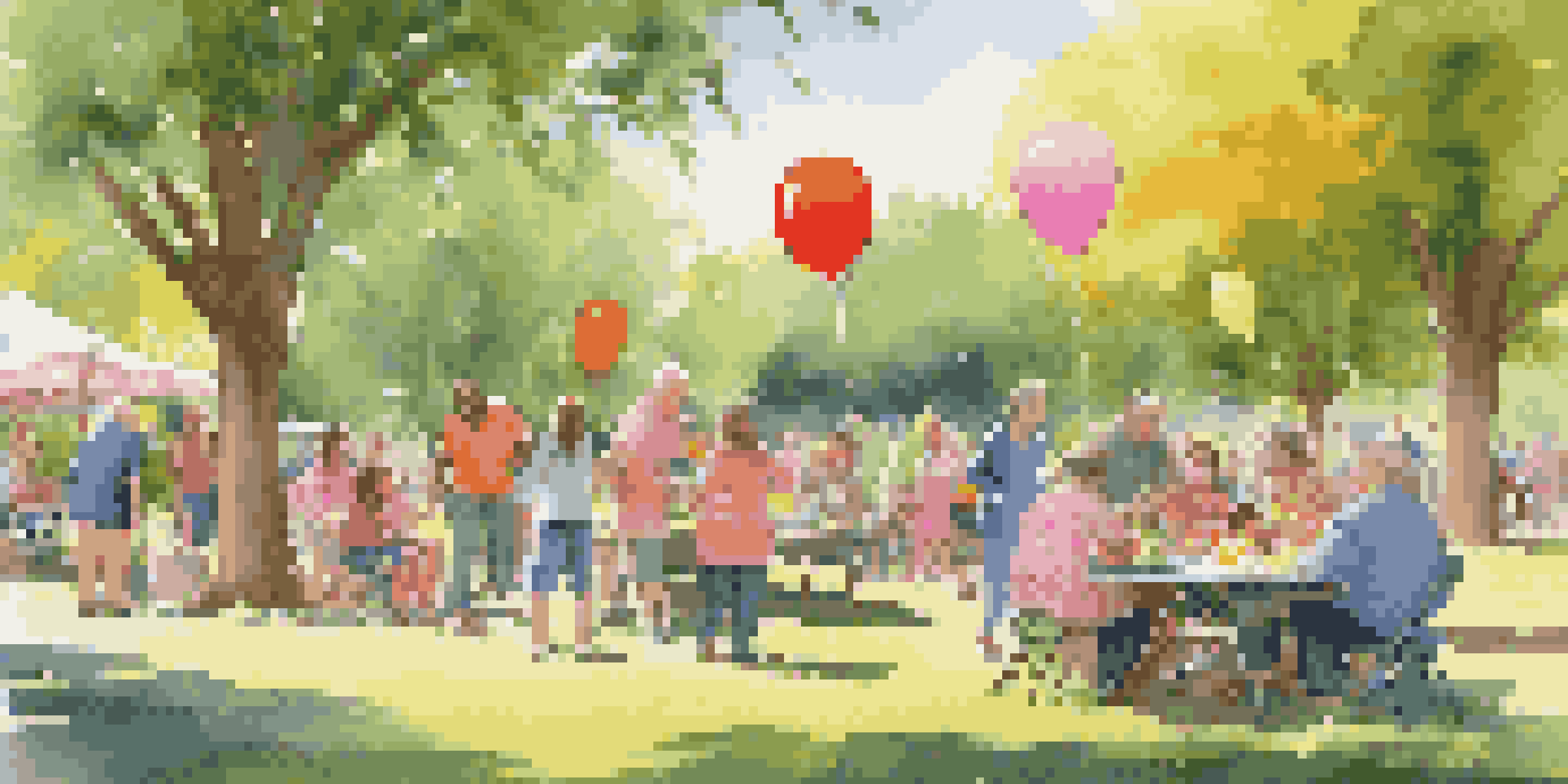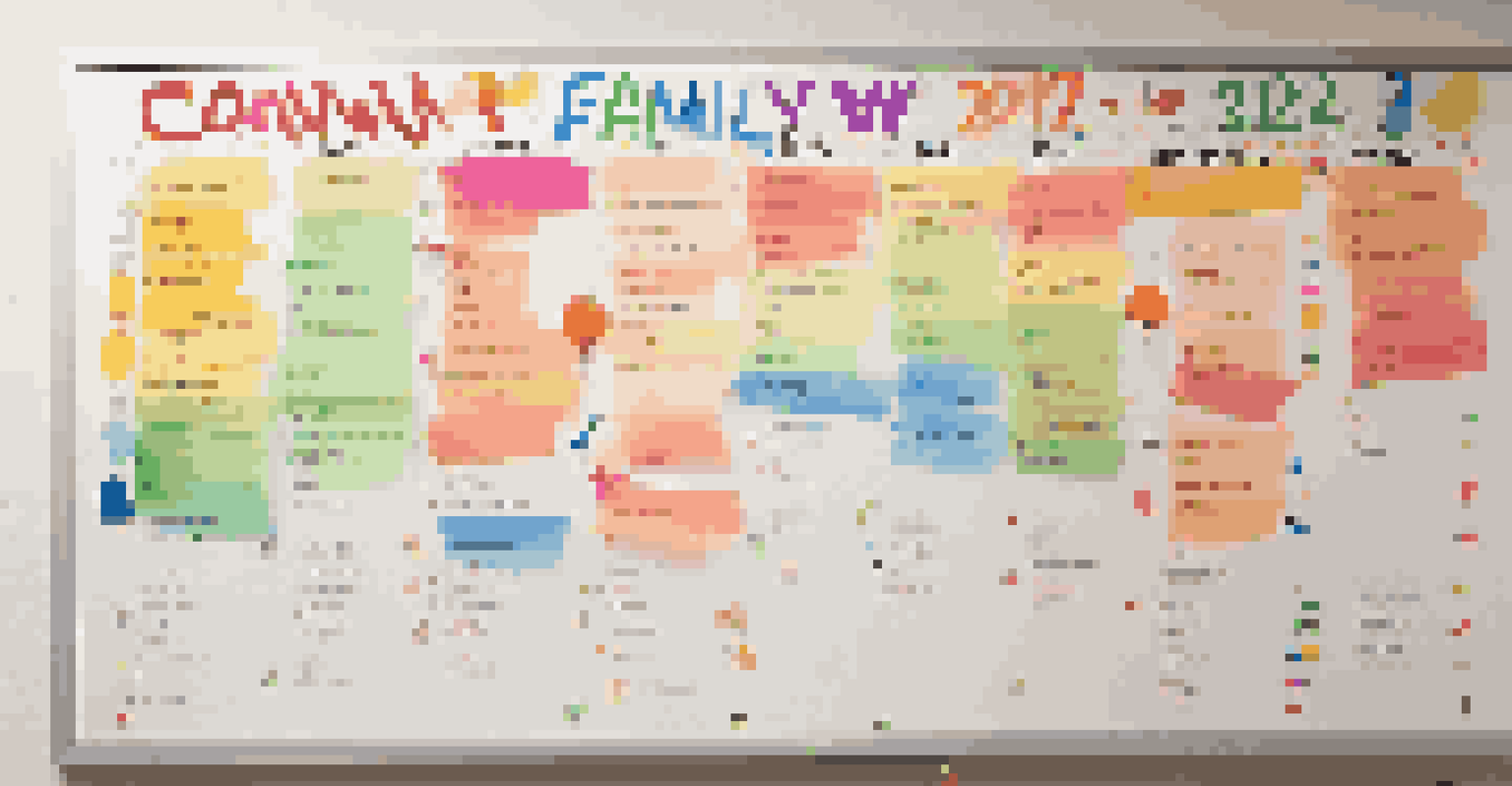Best Practices for Communication Before Family Reunions

Establish a Central Communication Channel for Everyone
A central communication channel is essential for keeping everyone informed about the family reunion. Consider using a group chat on platforms like WhatsApp or Facebook, where everyone can easily share updates. This helps ensure that no one misses important details, like the date, location, or what to bring.
The family is one of nature's masterpieces.
When everyone is on the same platform, it also fosters a sense of community and excitement leading up to the event. Family members can share their travel plans, dietary restrictions, and even fun anecdotes about past reunions. This interaction can help build anticipation and strengthen bonds among relatives.
Moreover, having a single point of communication can reduce misunderstandings. Instead of relying on multiple emails or texts, everyone can refer back to the main conversation thread for clarity. This organized approach minimizes confusion and keeps everyone on the same page.
Set Clear Expectations About the Reunion Plans
Setting clear expectations is crucial for a successful family reunion. This means outlining the schedule, activities, and any costs involved. When everyone knows what to expect, it reduces anxiety and helps family members feel more prepared.

For instance, if you plan to have a potluck, specify what each person should bring. This not only helps with planning but also ensures a variety of dishes that cater to everyone's tastes. Clear expectations can also include knowing the dress code or weather considerations, which can make a big difference in comfort levels.
Central Communication is Key
Using a single communication channel helps keep everyone informed and reduces misunderstandings.
Communicating these details early on allows family members to plan accordingly, whether it’s arranging travel or saving up for the trip. When everyone is informed and prepared, the reunion can be a more enjoyable and stress-free experience.
Encourage Participation in the Planning Process
Involving family members in the planning process can make them feel more invested in the reunion. Consider creating a poll to gather input on activities, location, or even the best dates for most people. This democratic approach not only makes everyone feel heard but also brings in varied ideas that can enhance the reunion experience.
Family is not an important thing. It's everything.
For example, if one family member suggests a game night while another proposes a barbecue, you might be able to combine both ideas into a fun-filled day. Collaborating on the planning helps generate excitement and ensures that the reunion includes something for everyone.
Encouraging participation can also lighten the load for the main organizer. By delegating tasks or asking for volunteers, you create a sense of teamwork that can strengthen family ties. Plus, everyone is more likely to attend if they have a hand in shaping the event.
Create a Timeline for Communication Leading Up to the Event
A well-structured timeline can streamline communication as the reunion date approaches. Start by sending out the initial announcement well in advance, followed by reminders as the date nears. This ensures that the reunion stays top of mind for everyone involved.
Consider sending out a countdown email or message one month before the reunion, followed by weekly updates. These updates can include anything from sharing excitement about registered attendees to highlighting planned activities. It keeps the buzz alive and encourages those who may still be undecided to commit.
Set Clear Reunion Expectations
Clearly outlining the reunion details helps family members prepare and reduces anxiety.
Having a timeline also helps manage last-minute questions or changes effectively. For example, if the venue changes or an activity is added, you can quickly inform the group through your established communication channel, minimizing confusion and maintaining enthusiasm.
Be Mindful of Different Time Zones and Schedules
If your family is spread out across different time zones, it's important to be mindful of that when scheduling calls or sending messages. An early morning text might be the middle of the night for someone on the other side of the country. By being considerate of these differences, you foster respect and maintain open lines of communication.
When planning meetings or calls, suggest a time that works for most, but also offer alternatives for those who may have conflicts. This flexibility can help ensure everyone feels included and valued, regardless of their location. Use tools like World Time Buddy to help visualize the best times for everyone.
Additionally, consider sending out information in a way that allows family members to catch up on their own time. This can include recorded video messages or written updates. By accommodating varying schedules, you ensure that everyone stays informed and engaged, no matter where they are.
Use Visual Aids to Enhance Communication
Incorporating visual aids can greatly enhance communication about your reunion. Create a shared digital folder where family members can access photos, maps, or even videos related to the reunion. This can serve as a great way to relive past memories and build excitement for the upcoming event.
For instance, a shared slideshow featuring previous reunions can inspire nostalgia and encourage attendance. It reminds everyone of the joy these gatherings bring, making them more likely to prioritize the event. Visuals can also clarify logistical details, such as a map of the reunion location or a schedule of activities.
Follow Up to Strengthen Bonds
Following up after the reunion reinforces connections and sets the stage for future gatherings.
Using visuals helps cater to different learning styles as well, ensuring that everyone can grasp the information being shared. Whether someone is a visual learner or prefers textual information, combining both can make communication more effective and engaging.
Follow Up After the Reunion to Maintain Connections
After the family reunion, following up is essential for maintaining those valuable connections. Send out a thank-you message to everyone who attended, expressing appreciation for their presence and contributions. This simple gesture can go a long way in reinforcing family bonds.
Additionally, consider sharing highlights from the reunion, such as photos or fun stories. Create a digital scrapbook that everyone can access, allowing family members to reminisce about the good times shared. This not only keeps the memories alive but also encourages discussions and interactions long after the event.

By following up, you also set the stage for future reunions. Ask for feedback on what worked and what could be improved. This input can help make future gatherings even more successful and ensure that everyone feels involved and valued in the family dynamic.